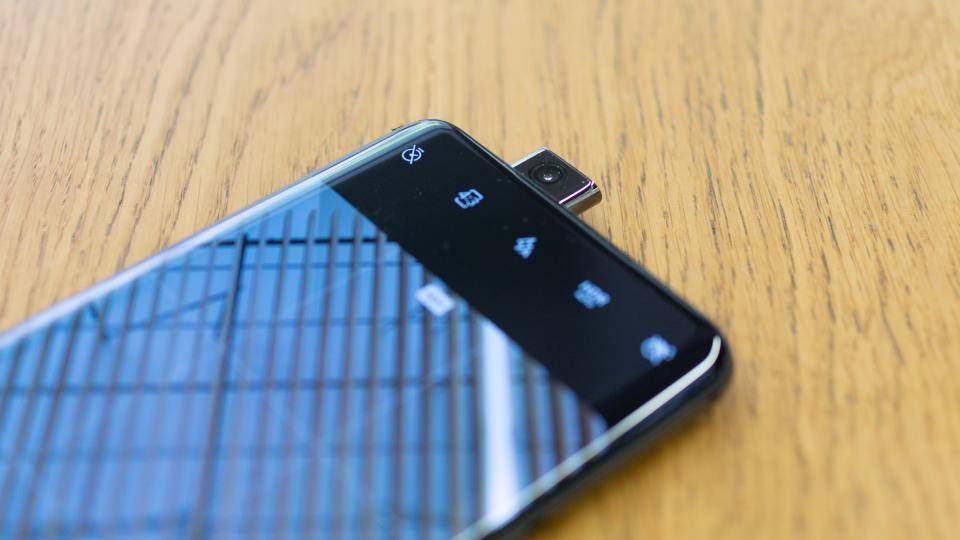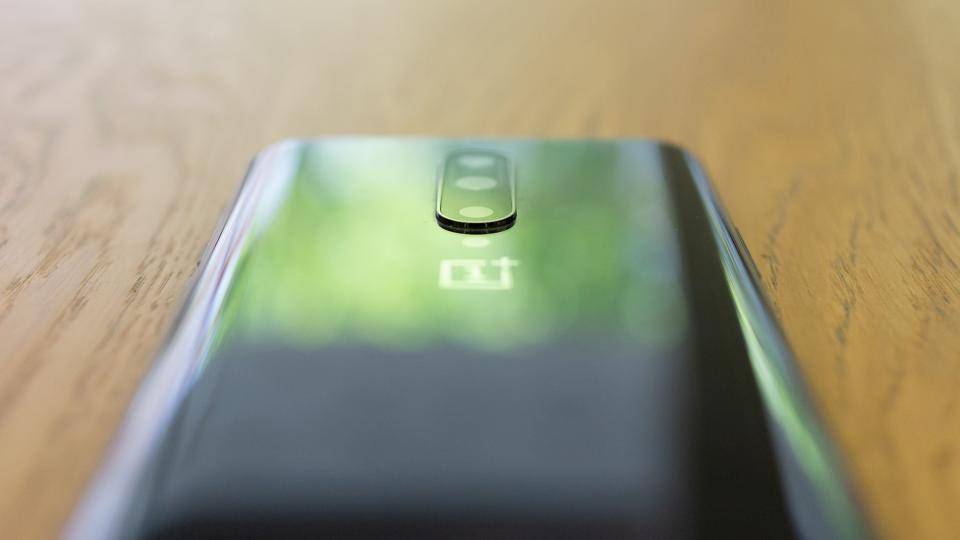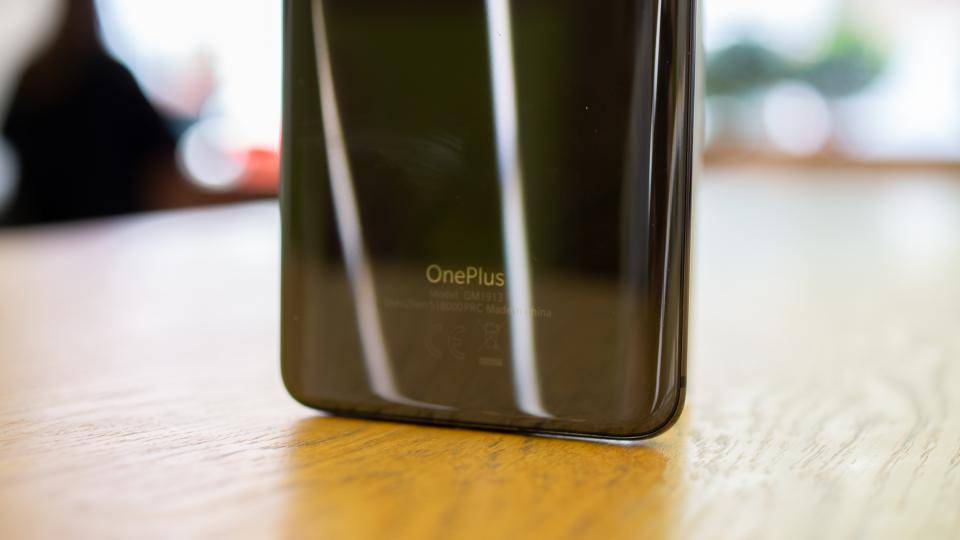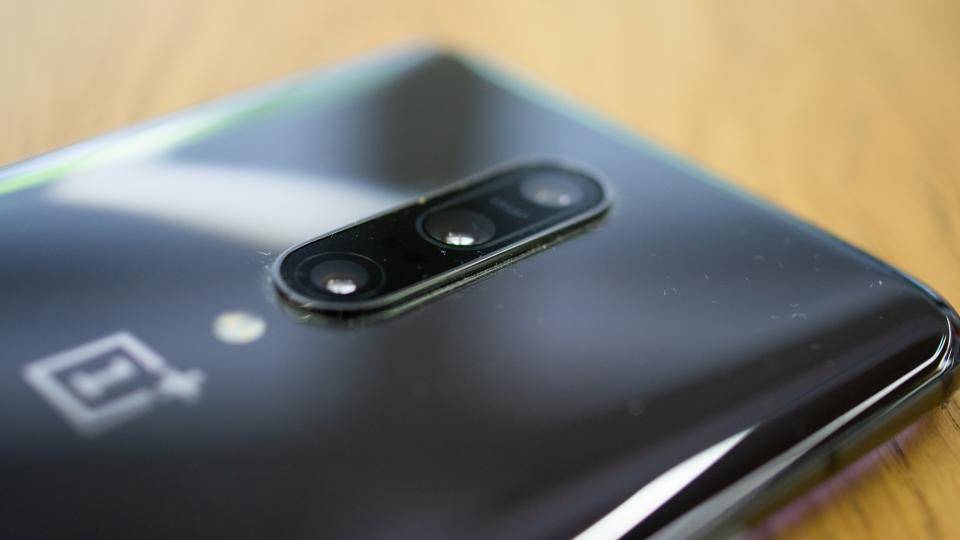If there’s one thing we’ve been able to rely on in the fast-moving world of smartphones in recent times, it’s that every time OnePlus releases a smartphone, it goes straight to the top of the charts for value. This year, however, may be different. Instead of going big on value as it normally does, OnePlus is making a play in what it calls the “ultra-premium” sector with the OnePlus 7 Pro.
Although OnePlus is also releasing a regular OnePlus 7 this year, it's delaying that phone's availability by a couple of weeks, so all the focus at launch is on its more expensive flagship handset. A bold move from a company that has specialised in undercutting its main rivals on price. So, is it any good or should you wait for the cheaper OnePlus 7 instead?
READ NEXT: OnePlus 7 review
OnePlus 7 Pro and OnePlus 7 Pro 5G: What you need to know
On the face of it, the OnePlus 7 Pro looks like a strong rival to the likes of the Samsung Galaxy S10 and S10 Plus. Like those phones, it’s a powerful Android handset and runs the latest generation of smartphone silicon. In this case, it employs the latest, greatest smartphone processor from Qualcomm – the Snapdragon 855.
It has a fully edge-to-edge screen with a motorised, pop-up selfie camera that retracts automatically if you drop it. At the rear is a triple camera setup comprising ultra-wide-angle, standard and 3x telephoto snappers. And, as so many phone manufacturers have done recently, the new OnePlus flagship is bigger than ever.

In fact, this is the largest OnePlus phone to date and the biggest smartphone I’ve handled since the enormous Huawei Mate 20 X, with an enormous 6.67in AMOLED display.
A couple of further key features to note are that the display has a super-smooth 90Hz refresh rate, and the phone is also available as a 5G model, with re-engineered internals to take advantage of the super-speedy mobile network . The OnePlus 7 Pro 5G is exclusive to EE in the UK .
OnePlus 7 Pro review: Price and competition
You might expect such a beast of a phone to come at a significant cost, especially with the way smartphone prices have been heading recently. It certainly isn't cheap, but OnePlus has managed to keep the cost down to a fairly reasonable level.
Costing from £649, the OnePlus 7 Pro is more expensive than we’ve come to expect from the Chinese firm over the years, but it’s still considerably cheaper than the S10, S10 Plus and the stupendously good Huawei P30 Pro.
READ NEXT: Huawei P30 review - the understudy steals the show
Here's a full list of the available configurations and UK prices:
OnePlus 7 Pro, 6GB RAM, 128GB storage, mirror grey – £649
OnePlus 7 Pro, 8GB RAM, 256GB storage, mirror grey/almond/nebula blue – £699
OnePlus 7 Pro, 12GB RAM, 256GB storage, nebula blue – £799
Where it might come unstuck is that, over time, Samsung and Huawei phones tend to fall steadily in price – the smaller Huawei P30 is already down by £100 to £599 on Amazon – while OnePlus prices tend to stay steady. In 12 months’ time, the OnePlus 7 Pro may, therefore, look a little on the pricey side.
OnePlus 7 Pro review: Design and features
For now, however, the OnePlus 7 Pro hits the mark in pretty much every way. It looks absolutely stunning, especially the indigo blue model, which is finished with a silky, matte-finish glass at the rear and a shimmering deep, “nebula blue” colour. The other two colours – “mirror grey” and a sort of pearl white with a bronze frame – look great too, but they don’t have quite the same wow factor.
In the hand, the OnePlus 7 Pro doesn’t feel quite as beefy as you might expect given the huge 6.67in display. That’s mainly due to the dramatic curves that run down the left and right front edges of the phone. The glass feels silky smooth, too – it’s Gorilla Glass 5 at both front and rear – and the overall feel is of minimal elegance, aided in no small part by the frame-filling screen at the front and the under-display fingerprint reader. I'm not a huge fan of motorised front cameras; I'm actually fine with a notch. However, I have to admit that the huge expanse of display on show here is a truly impressive sight.
That fingerprint reader, by the way, has been improved in the OnePlus 7 Pro. Although it uses the same type of technology as employed in the OnePlus 6T (optical), the sensor itself has an improved lens and a larger detection area for more reliable fingerprint reading.

So far, it’s performed very well and I’ve experienced fewer failed readings than with the previous model. OnePlus says it has improved the speed of recognition, too, from 0.4 seconds to 0.24 seconds and it certainly feels very snappy indeed.
Elsewhere, for the first time in a OnePlus phone, the OnePlus 7 Pro has stereo speakers. The firm has added and improved haptic-feedback motor for a more subtle buzz when calls and notifications arrive. It has “liquid” cooling, faster UFS 3 storage and the same “Warp Charge” tech as in the OnePlus 6T.
Given the size of this phone, I’m mildly disappointed to see the battery isn’t larger than 4,000mAh, and I’m also surprised that there’s still no official IP rating for dust- and water-ingress protection. Largely, though, the OnePlus 7 Pro offers an impressive design and specification given the price.

OnePlus 7 Pro review: Display
The 6.67in display, however, is fully tricked out, with HDR10+ certification and a resolution of 1,440 x 3,120 for a ludicrously high pixel density of 516ppi. Technically, it’s a great-quality display. Since it’s an AMOLED display, contrast is effectively perfect, and a peak brightness of 412cd/m2 should ensure you can read it in most circumstances. It doesn't go nearly as bright as its Samsung rivals in automatic mode, however, which means taking photographs or reading your WhatsApp messages can be a bit of a challenge in very bright sunshine.
As with all Android phones, the OnePlus 7 Pro doesn’t switch colour modes automatically, so you need to choose a colour mode according to the app you’re using. For browsing the web and looking at your photos, I'd recommend you switch away from the default Vivid mode to the phone's oddly named “Nature” mode. This delivers 89% coverage of the sRGB colour gamut and decent colour accuracy, where the “sRGB” mode gives you only 84.3% coverage.
For watching Netflix, meanwhile, you’ll want to use the Display P3 option. Listed under "Advanced" in the “Screen Calibration” section of the Display menu, this delivers an impressive 98% coverage of the DCI-P3 gamut. Weirdly, though, despite the HDR10+ certification and the fact that it measures well, HDR content didn't look right at all. Picking out a couple of scenes from the Netflix Original Marco Polo series and everything looked far too dark - even scenes filmed in broad daylight. There's clearly something broken here.

The big attraction with the OnePlus 7 Pro’s screen, however, is that it has a 90Hz refresh rate, raising the prospect of ultra-smooth gaming and silky-smooth scrolling. So far, high-refresh-rate displays have been limited to gaming-specific smartphones such as the Razer Phone 2 and Asus ROG Phone, so it's good to finally see such screens trickle down to more mainstream handsets.
The benefits are subtle yet noticeable, particularly in and around OnePlus' OxygenOS. Menus scroll by in a noticeably smoother fashion than on 60Hz displays, and when I tested various mainstream apps using the GameBench frame-rate-monitoring app, I found many – including Gmail, Twitter, Facebook and Chrome – were working at up to 90Hz, too.
Not all apps support 90Hz, however: Google Maps was capped at 60Hz, and none of the games I tried on the phone were running at 90Hz, either, despite having the option enabled in the settings. Presumably, games will developers will begin to enable this mode once the phone is officially available. Until then, I can't comment on the phone's prowess at high-frame-rate gaming.
READ NEXT: Huawei P30 review - the understudy steals the show
OnePlus 7 Pro review: Performance and battery life
As for raw performance, though, that’s impeccable; as you’d expect from a phone running Qualcomm’s latest silicon. Under the hood is a Snapdragon 855, backed up by either 6GB, 8GB or 12GB of RAM, depending on the model you buy, and either 128GB or 256GB of UFS 3 storage.
In benchmarks, the OnePlus 7 Pro is, as expected, a bit faster than Snapdragon 845-based phones like the OnePlus 6T and around the same as rivals based on latest generation silicone like the Samsung Galaxy S10.
However, I gave the phone a good workout with a number of our favourite games while monitoring using the GameBench software and, so far, nothing has caused it to break sweat.
Even with Shadowgun Legends set to its highest quality settings, I saw a median frame rate of 60fps, with very few moments of slowdown. It was the same story with Real Racing 3, and with PUBG Mobile in highest quality mode the OnePlus 7 Pro delivered a rock-solid 40fps, which is currently the maximum available.
Perhaps more impressive, however, is that despite the big, highly pixel-dense 90Hz display, battery life is very good indeed. In our video-rundown test, with the display brightness set to 120cd/m2, the OnePlus 7 Pro lasted 18hrs 30mins. That’s not the longest I’ve seen of late, but for a phone with this type of display, it’s highly impressive.
OnePlus 7 Pro review: Camera
Aside from the display, the other big attraction with the OnePlus 7 Pro is the camera, certainly when compared with the regular OnePlus 7. As has become the norm on high-end smartphones in 2019, the OnePlus 7 Pro has three cameras at the rear, each of which delivers a different view of the world.
The primary camera is a 48-megapixel Sony IMX586 module with an aperture f/1.8 and this is accompanied by an f/2.2, 16-megapixel ultra-wide camera and an f/2.4, 8-megapixel, 3x telephoto camera. Of these three cameras, both the primary and telephoto cameras come equipped with optical image stabilisation (OIS), which bodes well for low-light performance.
The front-facing camera, which pops up in double-quick time whenever you switch to selfie mode, is an f/2, 16-megapixel snapper. And, OnePlus tells me, it’s also been working hard behind the scenes to optimise the software for all these cameras. In particular, an improved Night Scape mode should offer quicker processing times.
One thing is certain: this is no lightweight setup. The primary camera is the module a lot of major camera manufacturers are using in their premium smartphones this year, and it’s capable of some great results. In the OnePlus 7 Pro, alas, it's not been put to best use.
First, let’s get one thing out of the way. By default, the OnePlus 7 Pro is set up to capture 12-megapixel images. By using a technique known as pixel-binning, the colour and brightness values from four pixels are averaged and squeezed into just one, the idea being to deliver superior colour and dynamic range compared with the full 48-megapixel image.
That’s fine. But when people buy a phone with a 48-megapixel camera in it – one that has “48MP” printed on the rear right next to the camera – they’re within their rights to expect 48-megapixel images, and good ones too. While it is possible to capture 48-megapixel images with the OnePlus 7 Pro, however, there are significant problems. First, you have to switch to Pro mode, at which point you lose easy access to the wide-angle and telephoto cameras. This is similar to the way Huawei handles its 40-megapixel camera mode and IT IS A PAIN.
To be fair, once you’ve seen the results from the straight-up 48-megapixel mode, you probably won't want to use it again anyway. Not until OnePlus issues an update, anyway, because the photographs it delivers are bizarrely terrible. In good light, they’re so devoid of fine-detail capture that I initially thought the software might be grabbing the images from the lower-resolution wide-angle camera and upscaling them.
But no, masking the lenses with a finger showed that these were, indeed, the results straight from the 48-megapixel camera. In good light, it looks like the camera firmware is applying a hugely over-the-top noise-reduction algorithm. The textures in the brickwork are smeary and smooth, while foliage looks like it's been put through some kind of paint-effect filter.
In low light, the camera is simply choosing the wrong auto-exposure settings.
The odd thing is that there’s no sign of any such problems in normal mode. In fact, as you can see from the comparisons below, in good light and low light, in 12-megapixel mode, the primary camera competes strongly with the Huawei P30.
Performance is good, too, with the 3x telephoto camera producing sharp, clean, shake-free images. It’s a touch softer than the Huawei P30’s 3x telephoto camera, but there really isn't much in it.
With the ultra-wide camera, however, it’s back to disappointment. The colours look slightly off, there’s lots of chromatic aberration (purple and green fringing) in areas of strong contrast, and the distortion-correction algorithm is too strong in the corners, resulting in images that look stretched and out of shape.
The caveat with all these weaknesses is that they look like software problems rather than major hardware issues. That means they could well be ironed out come launch day. Either way, I’ve asked OnePlus to keep us updated – if the situation changes I’ll retest and update this review.
On the positive side, video recording is excellent, with the camera able to shoot 60fps 4K footage fully stabilised and, while zooming isn’t perfectly smooth like it is on the iPhone Xs and Xs Max, it’s better than most multiple-camera Android smartphones can manage.
And the pop-up selfie camera is decent, too. It pops up automatically whenever you select the selfie mode in the camera app and is capable of capturing realistic results without overly softening skin textures.
Intriguingly, it’s also drop-sensitive, tucking itself away automatically if it senses you’ve let it slip out of your grasp. This won’t help with short drops of around a foot or less, as the mechanism isn’t quite quick enough. Drop it from a greater height, however, and it's unlikely to be the first thing that breaks.
OnePlus 7 Pro review: Early verdict
Despite my fears over OnePlus going premium with the 7 Pro, I needn’t have been worried. While this phone is the most expensive the company has produced, it’s still good value compared with similar products from big-name rivals Samsung, Apple and Huawei.
The OnePlus 7 Pro has a bigger display than – and as many rear cameras as – the Samsung Galaxy S10 Plus and the Huawei P30 Pro. It’s superfast, has great battery life and looks lovely.
The one big caveat to all this is that, while it delivers good result in default settings, the OnePlus 7 Pro’s camera doesn’t seem to work particularly well in 48-megapixel mode, and the ultra-wide-angle correction algorithm could use some sorting out. If OnePlus fixes these issues in time for shipping, this is a phone I’d be perfectly happy to recommend and award five stars to; if not, I'll be pointing you towards the cheaper Xiaomi Mi 9 or the Huawei P30 instead.
|
OnePlus 7 Pro specifications |
|
Processor |
Octacore, Qualcomm Snapdragon 855 (1 x 2.84GHz, 3 x 2.4GHz, 4 x 1.8GHz) |
|
RAM |
6 (with 128GB storage); 8/12GB (with 256GB storage) |
|
Screen size |
6.67in |
|
Screen resolution |
1,440 x 3,120 |
|
Pixel density |
516ppi |
|
Screen type |
AMOLED |
|
Front camera |
16MP, f/2 |
|
Rear camera |
Primary: 48MP, f/1.6; ultrawide: 16MP, f/2.2; 3x telephoto: 8MP, f/2.4 |
|
Flash |
Dual LED |
|
Dust and water resistance |
No official rating |
|
3.5mm headphone jack |
No official rating |
|
Wireless charging |
No |
|
USB connection type |
USB Type C with 30W Warp Charge |
|
Storage options |
128GB or 256GB |
|
Memory card slot (supplied) |
No |
|
Wi-Fi |
802.11ac |
|
Bluetooth |
5 |
|
NFC |
Yes |
|
Cellular data |
4G, Cat18 (1.2Gbits/sec; 150Mbits/sec) |
|
Dual SIM |
Dual SIM |
|
Dimensions (WDH) |
76 x 8.8 x 163mm |
|
Weight |
206g |
|
Operating system |
Android 9 Pie |
|
Battery size |
4,000mAh |

